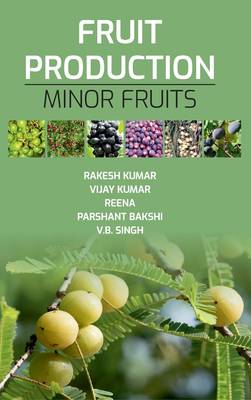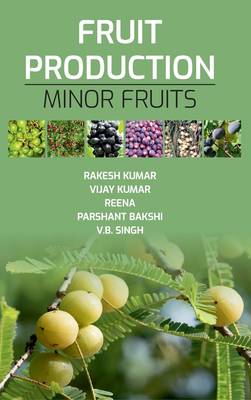
- Retrait gratuit dans votre magasin Club
- 7.000.000 titres dans notre catalogue
- Payer en toute sécurité
- Toujours un magasin près de chez vous
- Retrait gratuit dans votre magasin Club
- 7.000.0000 titres dans notre catalogue
- Payer en toute sécurité
- Toujours un magasin près de chez vous
Description
Minor fruit crops may be termed as the crops, that are neither grown commercially on large scale nor traded widely around the world. These crops fall under less known plant species in terms of research, medicinal properties, nutritive value and marketing aspects but can be seen well adapting and cultivated of various conditions viz., degraded land, low water availability, frost resistance, high temperature tolerance etc. Research workers worldwide have shown lot of evidences of underutilized wild edible plants possessing great valuable nutritional value. Underutilized fruits are undeniably known as protective food as they are rich in vitamins, phytochemicals and minerals. Fruits are excellent source of soluble dietary fibre, which helps in lowering the cholesterol level and fats from the body and also helps in smooth bowel movements. Many underutilized species can make an important contribution to a better diet for local communities and generate income sources of small and marginal fruit growers. Antioxidant properties helps in removal of free radicals from the body thus provide protection against chronicle and many infectious diseases. Underutilized fruits viz., Phalsa (Grewia asiatica), Jamun (Syzygium cuminii), Ber (Ziziphus mauritiana), Aonla (Emblica officinalis), Bael (Aegle marmelos), Pomegranate (Punica granatum L.), Karonda (Carissa carandas), Pummelo (Citrus grandis), Passion fruit (Passiflora edulis) and Tamarind (Tamarindus indica) etc. are equally important to commercially grown in these regards and there is good opportunity for fruit growers in arid, semi-arid as well as rainfed areas. A focus on neglected and minor fruit crops is an effective way to help a diverse and healthy diet and to combat micro nutrient deficiencies, the so-called hidden hunger and other dietary deficiency particularly among the rural poor community and the more vulnerable social groups in developing countries.
Spécifications
Parties prenantes
- Auteur(s) :
- Editeur:
Contenu
- Nombre de pages :
- 130
- Langue:
- Anglais
Caractéristiques
- EAN:
- 9789389130171
- Date de parution :
- 08-11-22
- Format:
- Livre relié
- Format numérique:
- Genaaid
- Dimensions :
- 152 mm x 229 mm
- Poids :
- 349 g

Les avis
Nous publions uniquement les avis qui respectent les conditions requises. Consultez nos conditions pour les avis.






